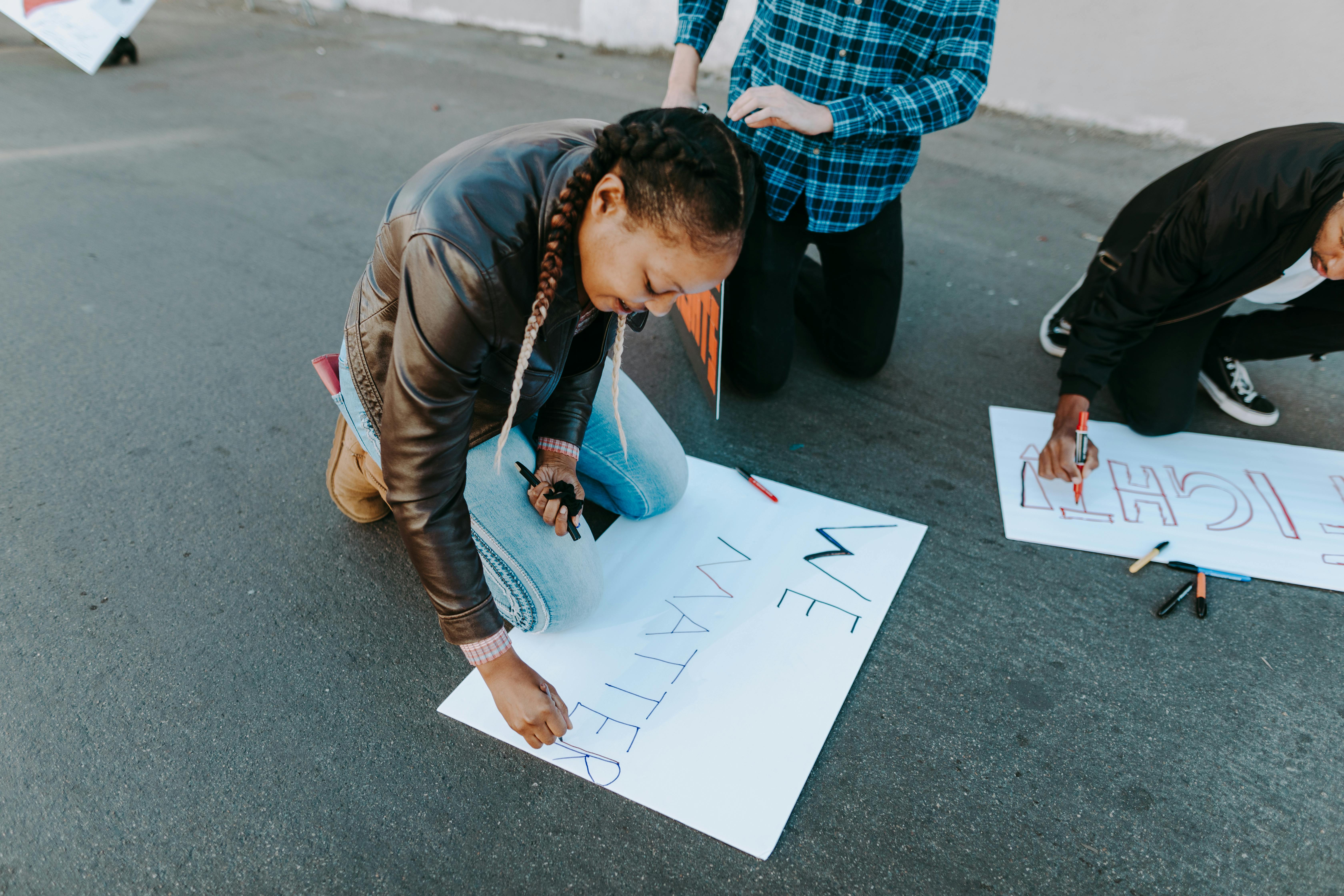Abstract
This article describes how one group of African American women educators set out to change the narrative surrounding the achievement of African American girls at their high school through the creation of an elective course entitled Ourstory, which was designed using the tenets of culturally relevant, African-centered, and Black feminist pedagogy. The main goal of the Ourstory course was to use the study of African American women’s history and heritage to increase self-esteem, self-efficacy and provide a safe space for the African American girls involved. This descriptive study explores the design and implementation of the Ourstory class using a qualitative analysis of the course syllabus, lesson plans, course materials, student work, observations, and interviews with staff and students. The findings from this study demonstrate that there is value in creating a space for African American girls to express themselves and build community.
References
Berry, D. C., & Duke, B. (Directors). (2013). Dark girls [Film]. Duke Media, Urban Winter Entertainment, & RLJ Entertainment.
Buckley, T. R., & Carter, R.T. (2005) Black adolescent girls: Do gender role and racial identity: Impact their self-esteem? Sex Roles 53, 647–661. https://doi.org/10.1007/s11199-005-7731-6
Case, K. I. (1997) African American other mothering in the urban elementary school. The Urban Review 29, 25–39. https://doi.org/10.1023/A:1024645710209
Collins, P. (1986). Learning from the outsider within: The sociological significance of black feminist thought. Social Problems, 33(6), S14-S32. https://doi.org/10.2307/800672
Combahee River Collective. (1977). A black feminist statement. In J. James & T. D. Sharpley-Whiting (Eds.), The Black Feminist Reader (pp. 261–270). Oxford: Blackwell Publishers.
Delgado, R., & Stefancic, J. (2000). Critical race theory: The cutting edge. Temple University Press.
Frohlich, L., Graves, F., & Kaufmann, L. (2014). Unlocking opportunity for African American girls (Rep.). New York, NY: NAACP Legal Defense & Educational Fund, Inc. (LDF) & National Women’s Law Center (NWLC).
Giovanni, N. (1973). Ego tripping and other poems for young people. Ill. Lawrence Hill Books.
Hafiz, S. (2018). The healing: One woman's journey from poverty to inner riches. Parallax Press.
Henry, A. (1998). Invisible and womanish: Black girls negotiating their lives in an African‐centered school in the USA, Race Ethnicity and Education, 1(2), 151-170. https://doi.org/10.1080/1361332980010202
Henry, A. (2005). Black feminist pedagogy: Critiques and contributions. In W. H. Watkins (Ed.), Black Protest Thought and Education, (pp. 89–105). Peter Lang.
King, L. J. (2014). When lions write history: Black history textbooks, African American educators, & the alternative black curriculum in social studies education, 1890-1940. Multicultural Education, 22(1), 2–11.
Ladson-Billings, G. (1995). But that’s just good teaching! The case for culturally relevant pedagogy. Theory into Practice, 34(3), 159-165.
Ladson-Billings, G. (1998). Just what is critical race theory and what’s it doing in a nice field like education? International Journal of Qualitative Studies in Education, 1, 7-24.
Ladson-Billings, G. (2009). The dreamkeepers: Successful teachers of African American children. Jossey-Bass Publishers.
Ladson-Billings, G., & Tate, W. F., IV. (1995). Toward a critical race theory of education. Teachers College Record, 97, 47-68.
Lee, C. D., Lomotey, K., & Shujaa, M. (1990). How shall we sing our sacred song in a strange land? The dilemma of double consciousness and the complexities of an African–centered pedagogy. Journal of Education, 172(2), 45–61. https://doi.org/10.1177/002205749017200205
LeCompte, M. D., & Schensul, J. J. (1999). Analyzing & interpreting ethnographic data. AltaMira Press.
Merry, M., & New, W. (2008). Constructing an authentic self: The challenges and promise of African‐centered pedagogy. American Journal of Education, 115(1), 35-64. https://doi.org/10.1086/590675
Morris, E. W. (2007). “Ladies” or “loudies”? Perceptions and experiences of black girls in classrooms. Youth & Society, 38(4), 490–515. https://doi.org/10.1177/0044118X06296778
Morris, M. W. (2016). Pushout: The criminalization of black girls in schools. New York Press.
Nasir, N. S. (2012). Racialized identities: Race and achievement among African American youth. Stanford University Press.
Omolade, B. (1987). A black feminist pedagogy. Women’s Studies Quarterly, 15, 32–39.
Riggs, M. T. (Director). (1987). Ethnic notions [Film]. California Newsreel.
Shange, N. (1975). For colored girls who have considered suicide, when the rainbow is enuf. Shameless Hussy Press.
Taylor, S. R. (2018). The body is not an apology: The power of radical self-love. Berrett-Koehler Publishers, Inc.
Ward, J. V. (1996). Raising resisters: The role of truth telling in the psychological development of African American girls. In B. J. R. Leadbeater & N. Way (Eds.), Urban girls: Resisting stereotypes, creating identities (pp. 85–99). New York University Press.
Authors retain copyright control of articles published in the journal. Reprints cannot be granted for articles in new issues. Except in these cases, those who wish to reprint articles, large excerpts, figures, graphs, tables, or images should contact authors directly. When referencing any published articles from this online journal, JAAWGE is to be credited as the publication outlet. We suggest including the URL link to JAAWGE. Permission to copy an article is provided to all subscribers, but cannot be sold, except by its author(s). Authors are free to disseminate and post their articles.

